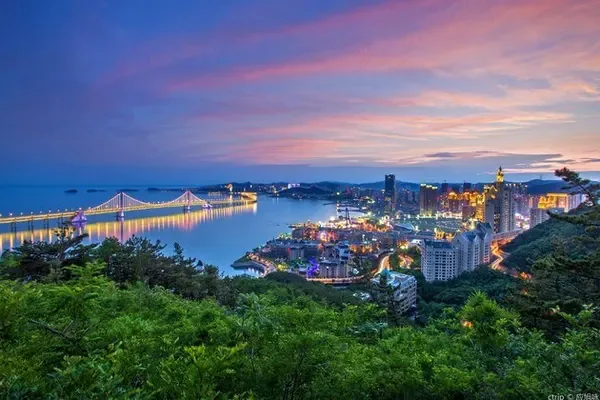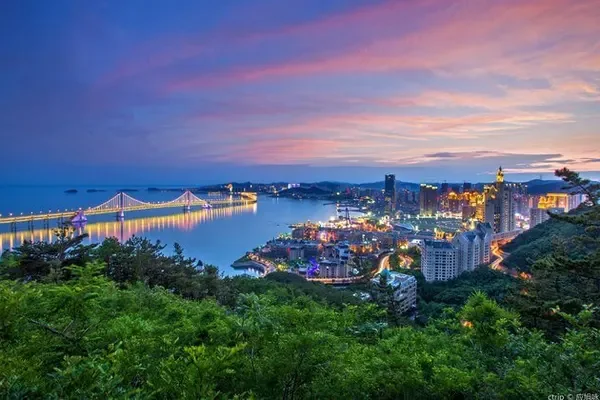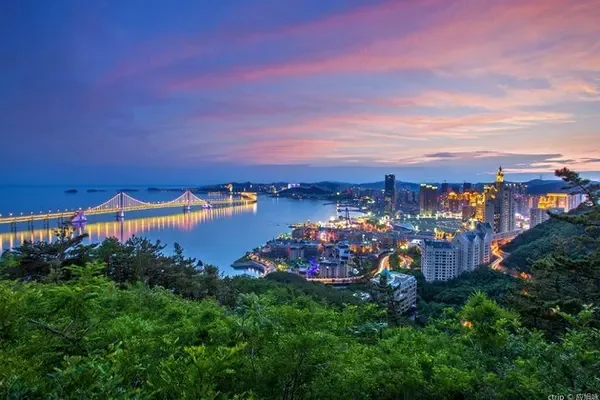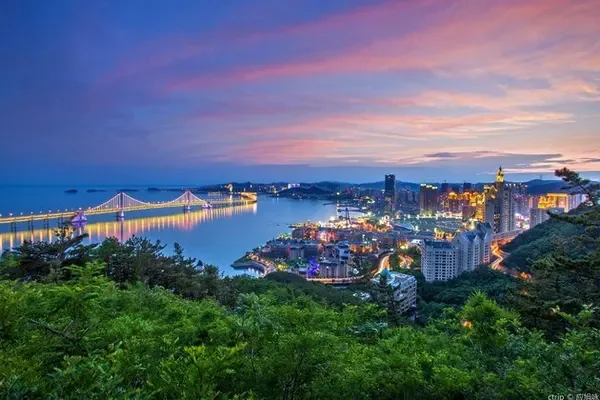Special
Great beauty - Qinghai! !
Preparation
1. Air ticket
2. Cash, bank card.
3. Daily necessities include: shampoo, shower gel, thin long sleeves, sunscreen (strong ultraviolet rays), mosquito repellent water, large towels, toiletries, common altitude sickness drugs such as rhodiola, sunglasses, hats, sports shoes
4. Camera
About the landlord
Post-90s love to travel, take pictures, and eat.
wechat: liunanj
Sina: @I am the nose and you are the snot
If you have any questions, you can always consult
About the itinerary
2016
July 22 Guangzhou-Xining (06:35-10:15) Xining-Tongren County, Huangnan Prefecture
Visit Heri Village, Zamao Township, Tongren County
July 23
Visit Maixiu Forest Farm in Zeku County and Licang Village in Zamao Township
July 24
Visit Longwu Temple, Regong Art and Culture Palace, and visit the June Festival in Maba Village, Baoan Town
July 25
Visit the Canbula Scenic Spot, Xining-Guangzhou (21:30-00:15)
Tongren Times Hotel
The opening article is about Qinghai
Qinghai has majestic and magnificent natural scenery, which has the characteristics of the Qinghai-Tibet Plateau. There are many scenic spots and historic sites characterized by ancient tombs, ancient temples, ancient rock paintings, and ancient castles. The holy lake on the plateau - Qinghai Lake, has bred Han, Tibetan, Hui, Mongolian, Tu, Kazak, Salar and other multi-ethnic groups. It has a long history and excellent cultural traditions, and maintains unique and colorful ethnic customs and customs. .
Qinghai has too many scenes in dreams, golden flowers, dazzling snow-capped mountains, clear water like the sea, that magical place that makes me linger in my dreams.
Day1
Arriving at the airport with the first ray of sunshine in the early morning in Guangzhou, boarded the flight to Xining. There was also a moment of tranquility on the originally busy apron.
After flying for about 3 hours, I arrived at Xining Airport safely. After leaving the airport, a heat wave hit my face immediately, and I felt like I was going to be cooked. The outdoor temperature was 20 degrees Celsius when we landed, but the air here is clean and dust-free, and the direct sunlight is very strong. Therefore, when traveling in Qinghai, ultra-thin long-sleeved sun protection clothing is essential, and sunglasses + hats can be equipped as needed.
The car drove along the newly opened Beijing-Tibet Expressway and arrived at the county seat of Tongren County in about one and a half hours.
???Southeast of Qinghai Province, located in Tongren County, "the first bend of the Yellow River in Jiuqu", is the seat of the People's Government of Huangnan Tibetan Autonomous Prefecture, the birthplace of "Regong Art", and the hometown of famous Tibetan painters. The mysterious Tibetan folk "June Festival" and the "Regong Art" mainly featuring thangka, pile embroidery and sculpture. The Longwu Temple with a history of more than 700 years and the Old Town of Longwu with a history of more than 240 years are important windows to display the local ethnic culture and the only national historical and cultural city in Qinghai.
???Driving 30km, the convoy arrived at Heri Village, which is located at an altitude of 3,200 meters, in the hinterland of the plateau and deep in the Zequ Grassland. The Tibetan stone carving art in Heri Village has a long history and has a history of nearly 200 years. It has distinctive national characteristics and is a microcosm of the Tibetan nation. It has written the people's yearning for a better life in the snowy area. Heri Village is neatly planned and consists of more than 200 dark red courtyards. The grasslands and mountain peaks in the distance are all greenish green, and the red and green match are particularly eye-catching. Even so, Heri Village is one of the 11 administrative villages in the township with the poorest pasture quality and prominent contradictions between livestock and grass. The lifestyle of farming and grazing cannot be carried out well in this village. It is also more remote than other villages. Even if there are good human resources and scenic resources, it is difficult to be in a situation where "the smell of wine is afraid of deep alleys". The basic economic conditions of the villagers are relatively poor, and the living conditions are relatively difficult.
↓↓↓There is a small temple in Heri Village - Xiaoheri Temple. It has a unique style, bright colors and exquisite workmanship. It is particularly conspicuous in the village and brilliant under the sun.
Mao Township and Ri Village and Ri Village
??? The paintings hanging on the ceiling of the temple are Thangka, a unique painting art form in Tibetan culture. The pigments are all made of precious mineral gemstones such as gold, silver, pearl, agate, coral, turquoise, malachite, cinnabar, and plants such as saffron, rhubarb, and indigo. The years are still bright and bright. Therefore, it is known as a treasure of Chinese national painting art, known as the "encyclopedia" of Tibetans, and also a precious intangible cultural heritage in Chinese folk art.
Heri Village, Zamao Township Heri Village, Zamao Township
↓↓↓The elderly in Heri Village, even when they are old, will sincerely contribute their meager strength to the village and society, such as praying, cleaning, or educating children. This is the power of faith.
Zamao Township and Heri Village
↓↓↓Lovely Tibetan girl
Zamao Township and Heri Village
??? Heri Manor in Heri Village has the Guinness World Record for the longest Thangka in the world! ! All spread out for nearly a kilometer, and painted by more than ten craftsmen at the same time. Driven by Rinpoche, he led Thangka masters from all walks of life to make great contributions to the art of Thangka and the development of Regong art.
↓↓↓ Thangka drawing has strict requirements and extremely complicated procedures. It must be carried out in accordance with the rituals in the scriptures and the requirements of the master, including the pre-painting ceremony, making canvas, drafting the composition, coloring and dyeing, drawing lines and shaping, laying gold and tracing silver, A complete set of technological procedures such as eye opening, seam mounting and lighting. It takes a long time to make a thangka, the shortest is half a year, and the longest is more than ten years.
??? Under the hospitality of Rinpoche, the star camels experienced a unique Tibetan meal. There are many ways to cook and arrange food in Tibetan banquets. In modern family and group celebrations, generally Like a Chinese meal, put hot dishes, cold dishes, soup, staple food and snacks.
↓↓↓???Super authentic yak yogurt, without sugar, it is really sour and thick! !
Mao Township and Ri Village and Ri Village
↓↓↓After the meal, I visited the poor peasant families in the local village
Heri Village Heri Village Zamao Township Heri Village
↓↓↓Back to the Times Hotel with a tired body all day, and rest.
Day2
??? Today we will go to a virgin forest in a little-known plateau - Maixiu Forest Farm
Maixiu Primitive Forest is located in Zeku County, 32 kilometers away from Longwu Town. It is a virgin forest natural scenic spot. In the forest farm, the peaks are emerald, the forest sea is vast, the flowing water is clear, and the birds are singing and the flowers are fragrant. It is breathtakingly beautiful, with rolling peaks, large tracts of virgin forests, towering trees and beautiful scenery. It is said that different colors will appear in different seasons, just like the palette knocked down by God.
Tickets: Free tickets! ! ! ! !
Transportation: You can take the Zeku bus in Longwu Town and get off at the section of Maixiu Forest Farm. Then you need to ride a motorcycle or drive along the gravel road for half an hour before entering the forest farm.
Altitude: 3100 meters
↓↓↓There are many mountains and mountains, and the river is winding

Maixiu Forest Farm

Maixiu Forest Farm

Maixiu Forest Farm

Maixiu Forest Farm

Maixiu Forest Farm
↓↓↓Walking along the forest farm, there are few people, the air is fresh, the landscape is rich, and the hiking is not difficult. Whether it is an adult or a child, it is really a very suitable place for hiking.

Maixiu Forest Farm
???Walk around the forest farm and return along the road for about an hour; despite the short time, it is said that only less than 5% of the forest farm area has been opened up, and the deeper places must be taken by local people, because there are still many in the forest farm. wild animals. Brown-eared pheasants and marmots are common, and wolves and other animals can be seen in deeper areas. The commercialization of this place is very weak, and the herdsmen around are very hospitable. They go to rest at other people's houses and drink some milk tea for free.

Maixiu Forest Farm
↓↓↓Blue sky and white clouds, green grass and wild flowers

Maixiu Forest Farm

Maixiu Forest Farm

Maixiu Forest Farm

Maixiu Forest Farm

Maixiu Forest Farm

Maixiu Forest Farm

Maixiu Forest Farm
↓↓The forest farm in summer is emerald green, everything is so harmonious.

Maixiu Forest Farm

Maixiu Forest Farm

Maixiu Forest Farm

Maixiu Forest Farm

Maixiu Forest Farm

Maixiu Forest Farm
↓↓↓The beautiful scenery is now, let’s feed a bite of dog food first

Maixiu Forest Farm

Maixiu Forest Farm
↓↓↓The forest is full of towering ancient trees, many of which are more than a hundred years old.

Maixiu Forest Farm

Maixiu Forest Farm

Maixiu Forest Farm

Maixiu Forest Farm
↓↓↓Blow a mouthful of dandelion, fluttering with good wishes

Maixiu Forest Farm

Maixiu Forest Farm
↓↓↓In my opinion, Maixiu Forest Farm is China's "Horton Plain". There is no hustle and bustle of the city, no dazzling supermarkets, and no modern atmosphere at all; but look at the pious expressions of the local Tibetan herdsmen, With a satisfied smile, can you say that they are not fulfilled or happy?

Maixiu Forest Farm
??? After visiting Maixiu Forest Farm, the star camels came to Licang Village. Licang Village is also a village rich in tourism resources and cultural resources. The village is surrounded by mountains and rivers, with beautiful scenery, accompanied by activities such as river rafting, pasture horse riding, hiking, and Tibetan family fun. The history of folk customs such as Tibetan opera and Tibetan songs in the village It has a long history.

Licang Village
??? Tsampa zan ba is one of the traditional staple foods of Tibetan herdsmen. "Zanba" is the Tibetan transliteration of fried noodles. It is a staple food that Tibetan people must eat every day. "Qula" (casein) and sugar are stacked on the table.

Licang Village
↓↓↓After adding milk, stir it with chopsticks until it is dry, then you can eat it with your hands.

Licang Village
??? Ginseng fruit rice is also called "Dolma Zhesi". After cooking ginseng fruit, put it on top of the rice, sprinkle some white sugar finely, and evenly pour a spoonful of hot butter juice on it. It is nutritious and delicious The ginseng fruit rice is ready. Ginseng and fruit rice is regarded as a kind of auspicious food by Tibetan compatriots. Tibetans only eat ginseng and fruit rice at weddings and festivals, and treat guests with it, which is regarded as honorable. In the solemn Tibetan New Year, ginseng fruit rice will be served in a small and exquisite container and offered in front of the altar.

Licang Village
??? Stewed mutton in clear soup. Put some coriander and other plants in the pot and simmer slowly for the most authentic taste.
 Licang Village
Licang Village Licang Village
Licang Village
↓↓↓Visit Licang Village after dinner. The large area of wheat/highland barley around the village is very beautiful.
 Licang Village
Licang Village

Licang Village
↓↓↓There is a super majestic sacred tree at the entrance of Licang Village. According to the investigation of the agricultural department, it has a history of nearly a thousand years. This is really a miracle for the plateau area.

Licang Village
↓↓↓In order to promote the unique tourism and cultural resources in the village, Licang Village specially launched the unique tourism experience project of "Tibetan Family Fun". The so-called Tibetan home entertainment is actually a project that combines original Tibetan-style homestays, food, and entertainment. Living in a Tibetan house, eating Tibetan food, singing Tibetan opera, dancing Tibetan dance, etc.

Licang Village
↓↓↓ Looking around, there is nothing special about the appearance of the house

Licang Village
↓↓↓The inside of the house is a Tibetan homestay that combines modernity and tradition

Licang Village

Licang Village Licang Village
↓↓↓The corridor outside the room has a glass curtain wall for sun and rain, which is especially suitable for family gatherings.
 Licang Village
Licang Village Licang Village
Licang Village
???Laobapan, the Qinghai local flavor banquet, is a unique and superior banquet dish in the Hehuang Valley of the Qinghai Plateau. It is unique for its unique dishes and charm, and enjoys a high reputation in the Hehuang Valley of the Qinghai Plateau. "Laobapan" consists of eight kinds of cold dishes and eight kinds of hot dishes, especially hot dishes. It mainly uses stewing, roasting, frying, steaming, boiling, simmering, and deep-frying. It forms a variety of delicacies in the Hehuang Valley of the Qinghai Plateau. However, in order to adapt to the tastes of everyone, I changed a few vegetables when ordering.

colleague

colleague

colleague

colleague

colleague

Colleague Day3
???Longwu Temple is one of the oldest Tibetan Buddhist monasteries in Qinghai and the largest Gelugpa monastery in southern Qinghai. "Longwu" is a Tibetan language, meaning agricultural area. The full name of Longwu Temple in Tibetan is "Longwu Gongdeqin Chokerlin", which means "Longwu Great Classical Institute". Longwu Temple was first built in the fifth year of Dade in the Yuan Dynasty, that is, in 1301. According to the characteristics of pious and religious beliefs of the ethnic minorities in the frontier, the Ming Dynasty adopted a policy that suits them, built temples arbitrarily, and bestowed Zen masters to win people's hearts. In the third year of Hongwu in the Ming Dynasty, that is, in 1370 A.D., the Ming Dynasty allowed the expansion of Longwu Temple and officially named it Longwu Temple. In the Amdo area, its scale, status and influence are second only to the Labrang Monastery in Gansu Province and Kumbum Monastery in Qinghai Province.
Tickets: 60 yuan/person, designed in several halls, and tear off one of the tickets on each hall.
ps: No photos are allowed in the hall

Longwu Temple
In the Great Sutra Hall in the center of Longwu Temple, you can see Thangkas from hundreds of years ago. The main paintings are various Buddha statues, because all of them have to be handmade. Walking in the main hall, you can find that the Buddha statues of Tibetan Buddhism and Chinese Buddhism are very different. The hall of Matou Mingwang is the characteristic of this temple, which is rarely seen in ordinary temples even in Tibetan Buddhist temples. Matou Mingwang has a ferocious face, which acts as a deterrent, while most of the statues of Chinese Buddhism are benevolent and kind.
↓↓↓ There are dozens of halls in the temple, but many of them are not open to the public. It is recommended to visit for half a day.

Longwu Temple
↓↓↓Behind the wall are the places where monks live.

Longwu Temple
↓↓↓The glare of the sun illuminates the entire temple with a golden light

Longwu Temple
↓↓↓Those who turn the scriptures, pray for peace.

Longwu Temple

Longwu Temple

Longwu Temple

Longwu Temple
↓↓↓Meet two little lamas

Longwu Temple

Longwu Temple

Longwu Temple
↓↓↓Under the leadership of Rinpoche, we had the honor to visit the residence of the Living Buddha, which is also the highest place in the temple.

Longwu Temple

Longwu Temple
↓↓↓ I also received Rinpoche's suggestion that my life will usher in a new peak.

Longwu Temple
???When the convoy drove into Jiacangma Village, Longwu Town, a unique building with a combination of Tibetan and Chinese on the roadside attracted us. The bilingual "Renjunyuan" in Tibetan and Chinese on the gate was shining brightly.
"Renjunyuan" was founded by Xia Wujiao, a master of folk arts and crafts. We walked into "Renjunyuan". Mask exhibition hall, Tibetan former residence, sculpture exhibition hall, boutique exhibition hall... In the "Renjun Courtyard" on the upper and lower three floors, it is magnificent and exquisite... The exquisite thangkas, clay sculptures, murals, etc. that cannot be expressed in words are vividly portrayed , The perfect and vivid statue shape is jaw-dropping.
↓↓↓The following pictures of the main entrance are from the Internet!

Regong Art Museum

Regong Art Museum

Regong Art Museum
???Not far from the "Renjun Courtyard" is the Regong Ethnic Cultural Palace, which covers an area of 25 mu. The main building consists of a main building and two wing buildings in the north and south. The main building has 5 floors. The whole building is based on the unique yellow and purple colors of the Tibetan people, with unique, rich, magnificent and magnificent shapes, and has a unique national style. The Cultural Palace consists of five parts: Thangka Museum, Thangka Creation Institute, Public Welfare School, Library and Cultural Palace Meditation Hall.
 Regong Art Museum
Regong Art Museum
↓↓↓Students who are learning painting

Regong Art Museum
???The plateau is the most beautiful in July and August. At this time, Regong holds the annual "June Festival".
The annual Regong June Festival is held between June 17th and June 25th of the lunar calendar every year. There are more than 50 villages that hold activities, but not all villages start at the same time, but each village Zhuang taught the wrong time to invite each other to watch. It is a traditional cultural festival unique to Tibetan villages in the Longwu River Valley in Regong, Qinghai, mainly to invite and worship gods. It is said that it has a history of more than 700 years.
June meeting documentary: http://www.iqiyi.com/w_19rtkgw3dh.html

Maba Village June Meeting

Maba Village June Meeting

Maba Village June Meeting

Maba Village June Meeting

Maba Village June Meeting

Maba Village June Meeting

Maba Village June Meeting

Maba Village June Meeting

Maba Village June Meeting

Maba Village June Meeting
↓↓↓Dancing gods, dragons, and soldiers, the scenes are magnificent and the dances are chic and rough. Dance activities play a supporting role in this grand religious festival from beginning to end.

Maba Village June Meeting

Maba Village June Meeting
???Mouth skewer is a mage who inserts steel needles into the left and right cheeks for voluntary young people, also known as "lock". , in exchange for the happiness and peace of the creatures in the world.
???Mouth skewer is a mage who inserts steel needles into the left and right cheeks for voluntary young people, also known as "lock". , in exchange for the happiness and peace of the creatures in the world.

Maba Village June Meeting

Maba Village June Meeting

Maba Village June Meeting

Maba Village June Meeting
???Backcut means to prick 10--20 steel needles on the back. The dancer is bare-chested, holds a drum in his right hand, beats the drum with his left hand, and dances while beating. The unique rhythm of dragon drums, rough and graceful dancing, colorful and luxurious costumes, and mysterious and devout prayers have brought joy and romance to the festive and bumper harvest of Regong Tibet.
ps: The customs of each village are different, and the June Festival in Maba Village does not have a backstage, the picture below is borrowed from the Internet

Maba Village June Meeting

Maba Village June Meeting
???Kaishan is a mage who cuts the top of his head with a knife and sprinkles blood in all directions. This is a simple and unique way of offering sacrifices to heaven, which fully demonstrates the industrious, simple, wise and brave character of the Tibetan people. The scene is too bloody, so I won’t post any pictures. If you are interested, you can search online. The moment the mage was possessed by the gods, and then cut through the top of his head, it was really shocking! ! !

Maba Village June Meeting

Regong Art Museum

Regong Art Museum

Regong Art Museum Day4
???Located in Jianzha County, Ziyezhou, Huangnan Tibetan Autonomous Prefecture, Qinghai Province, close to the Yellow River in the north, and close to the Lijiaxia Hydropower Station. The scenic area covers an area of 217 square kilometers, with an altitude of 2,100 to 4,600 meters. It is inhabited by Tibetan, Han, Hui, Salar and other ethnic groups. . It is a national forest park, a national geological park, and a national water conservancy park.
Tickets: 50/person, 100/person for the bus in the scenic area, 90/person for the cruise ship in the scenic area, 240/person for the full package

Cambra National Forest
↓↓↓It is said that private vehicles seem to be unable to drive into the scenic spot now, but take a tour minibus at the gate, and you can stop at each scenic spot to visit. The altitude difference in the scenic area is still a bit large, and there are often winding and narrow mountain roads. Unfortunately, when we went there, the weather was not beautiful, the clouds were foggy, and we couldn't see anything at high altitudes. Only when I returned to the low altitude did I take two large panoramas. It was also shocked!

Cambra National Forest

Cambra National Forest

Cambra National Forest
↓↓↓Lijiaxia Reservoir

Cambra National Forest

Cambra National Forest

Cambra National Forest

Cambra National Forest
Because of the weather, I didn't have a good tour of the Canbula scenic spot, but the scenery along the way is very good. I hope to come back again in the future. After Cambra, this trip is coming to an end.
epilogue
The itinerary for a few days, although the time is relatively short, allowed me to appreciate traditional Tibetan thangka, pile embroidery, clay sculpture and other artistic masterpieces, and watched the shocking traditional folk activity "June Festival" of the local Tibetans. Qinghai does not only have Salt Lake and Qinghai Lake, you can feel the most simple local culture, welcome to colleagues! ! !



